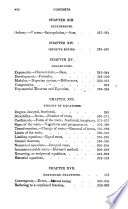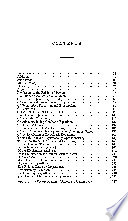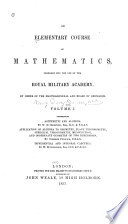 | George Roberts Perkins - Algebra - 1848 - 234 pages
...transpose a term from one side of an equation to the other, we must observe this У RULE. Лny term may be transposed from one side of an equation to the other, by changing its sign. EXAMPLES. x+6 5x 1. Clear the equation - - — \-26=- — \-2 effractions, and transpose the terms... | |
 | Joseph Ray - Algebra - 1848 - 252 pages
...— dx to the opposite members of the equation, and, at the same time, changed their signs. Hence, Any quantity may be transposed from one side of an equation to the other, if, at the same time, its sign, be changed. TO CLEAR AN EQUATION OF FRACTIONS. ART. 154.— 1. Let... | |
 | Stephen Chase - Algebra - 1849 - 348 pages
...place beyond, carry over. member by 3 ; 3 must, therefore, be subtracted from the second member. Hence, Any quantity may be transposed from one side of an equation to the other, if, at the same time, we change its sign. ".) If we transpose all the terms of an equation, the signs... | |
 | John William Colenso - Algebra - 1849 - 262 pages
...156, or 6x -f 4x + 3z = 156 ; hence 13z = 156, and x = \*/- = 12. 39. A quantity may be transferred from one side of an equation to the other by changing its sign, without destroying the equality expressed by it. Thus if х-а=у+Ъ, adding a to each side of the... | |
 | John Bonnycastle - Algebra - 1851 - 288 pages
...axioms and.processes are required, the most useful and necessary of which are the following:—f CASE I. Any quantity may be transposed from one side of an equation to the other, by changing its sign ; and the two members, or sides, will still be equal. Thus, if x + 3 = 7 ; then will x = 7 — 3, or... | |
 | William Smyth - Algebra - 1851 - 272 pages
...of an equation to the other is called transposition, and we have the following rule, viz.: Any term may be transposed from one side of an equation to the other, if at the same time we change its sign. 2. What is the value of x in the equation 4z + 22 = 57 —... | |
 | Joseph Ray - Algebra - 1848 - 250 pages
...— dx to the opposite members of the equation, and, at the same time, changed their signs. Hence, Any quantity may be transposed from one side of an equation to the other, if, at the same time, its sign be 'changed. TO CLEAR AN EQUATION OF FRACTIONS. ART. 1 54.— 1 . Let... | |
 | Joseph Ray - Algebra - 1852 - 408 pages
...and — dx to the opposite members of the equation, and at the same time changed their signs. Hence, Any quantity may be transposed from one side of an equation to the other, if, at the same time, its sign be changed. This is termed the Rule of Transposition. TO CLEAR AN EQUATION... | |
 | Royal Military Academy, Woolwich - Mathematics - 1853 - 476 pages
...following remarks, which are founded on the preceding axioms, apply to all classes of equations. 85. A quantity may be transposed from one side of an equation to the other by changing its sign from + to — , or from — to +, without destroying the equality. Thus if x + 3 = 17, then subtracting... | |
 | George Boole - Logic, Symbolic and mathematical - 1854 - 442 pages
...equation x - z = y, (8) which must therefore be a deduction from (7). Thus a term z has been removed from one side of an equation to the other by changing its sign. This is in accordance with the algebraic rule of transposition. But instead of dwelling upon particular... | |
| |